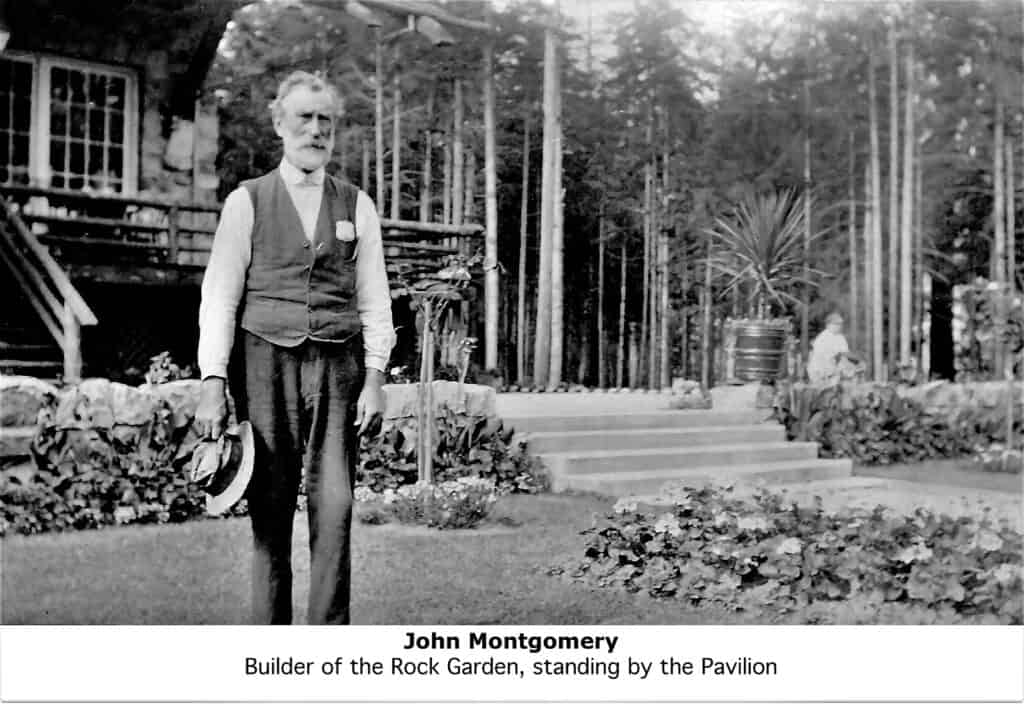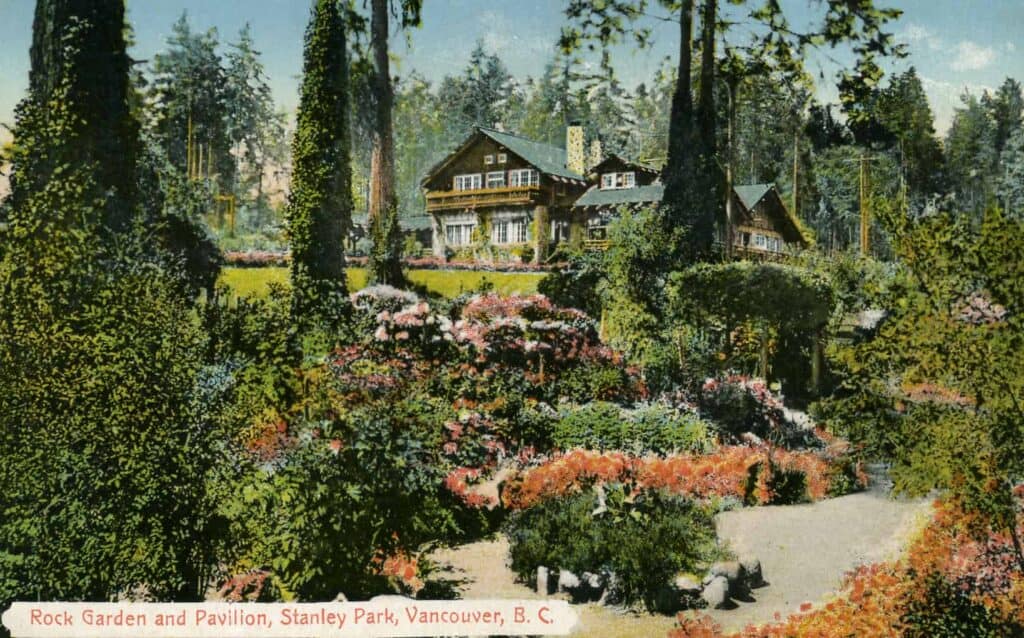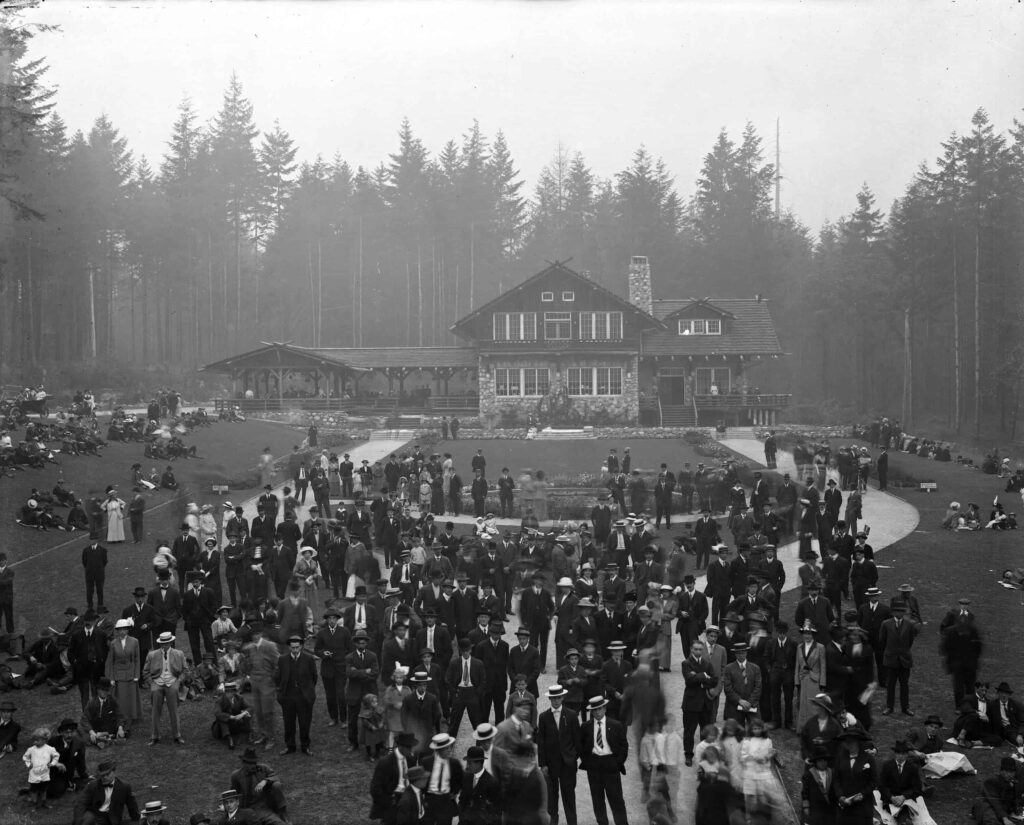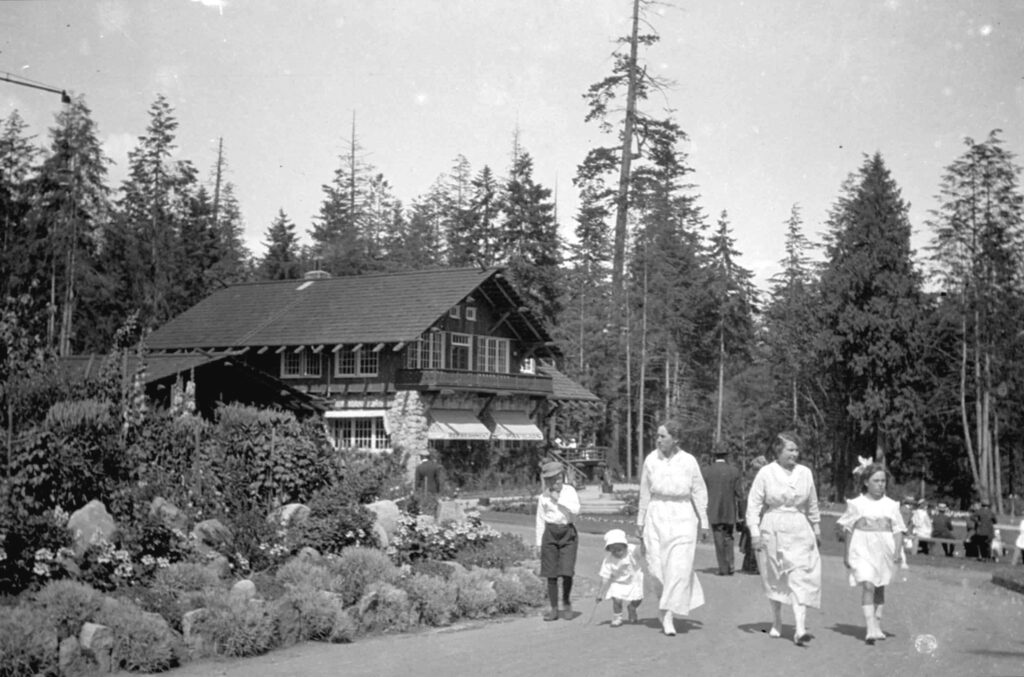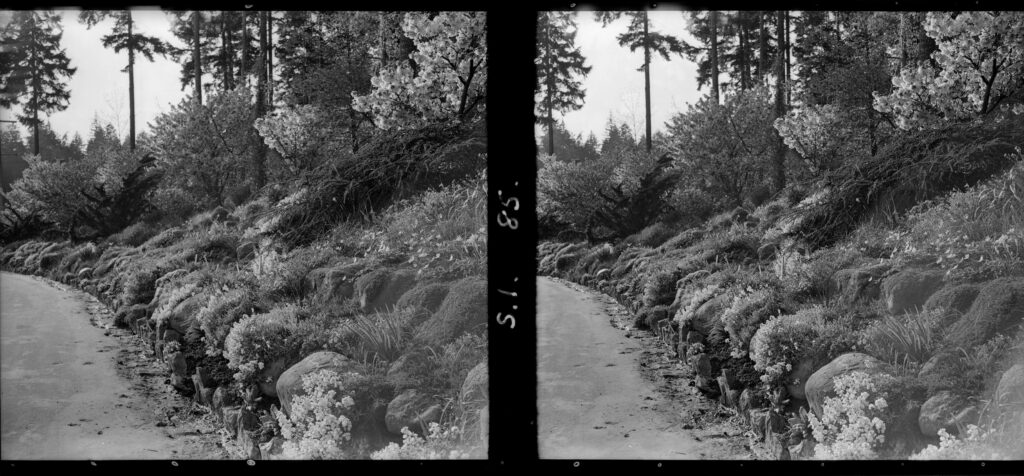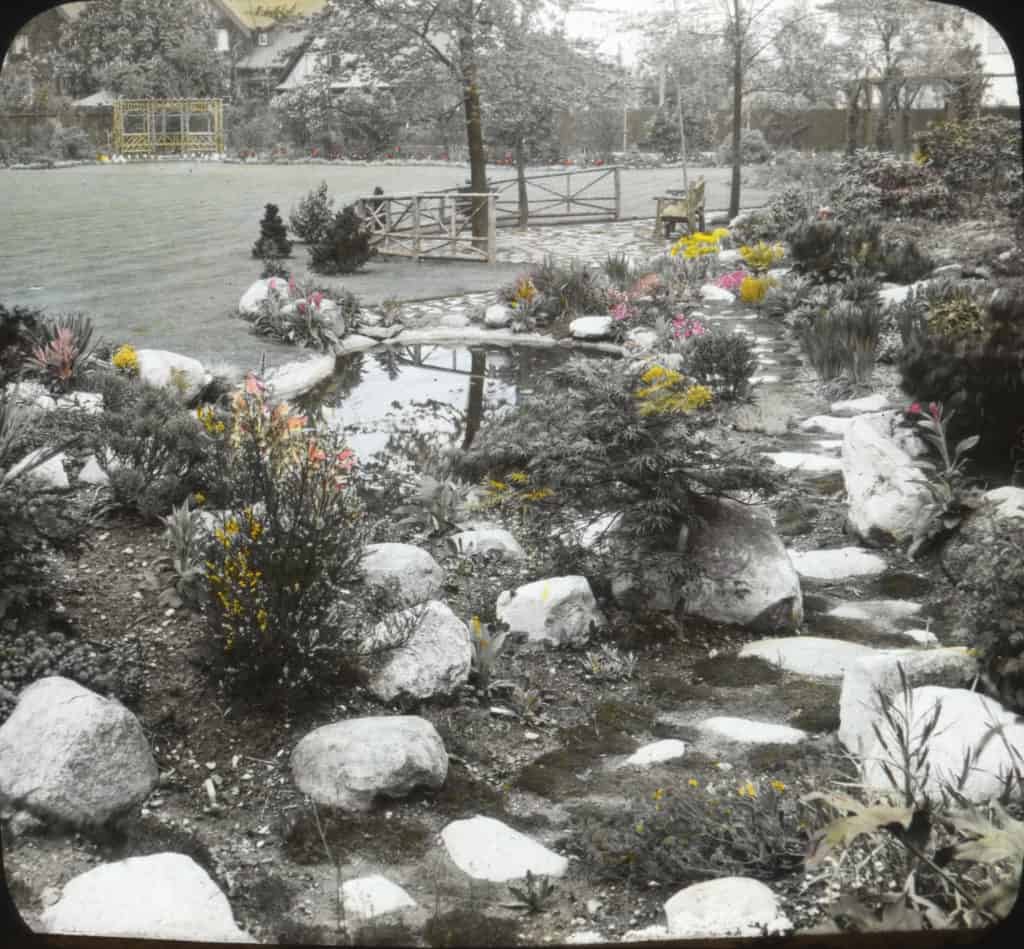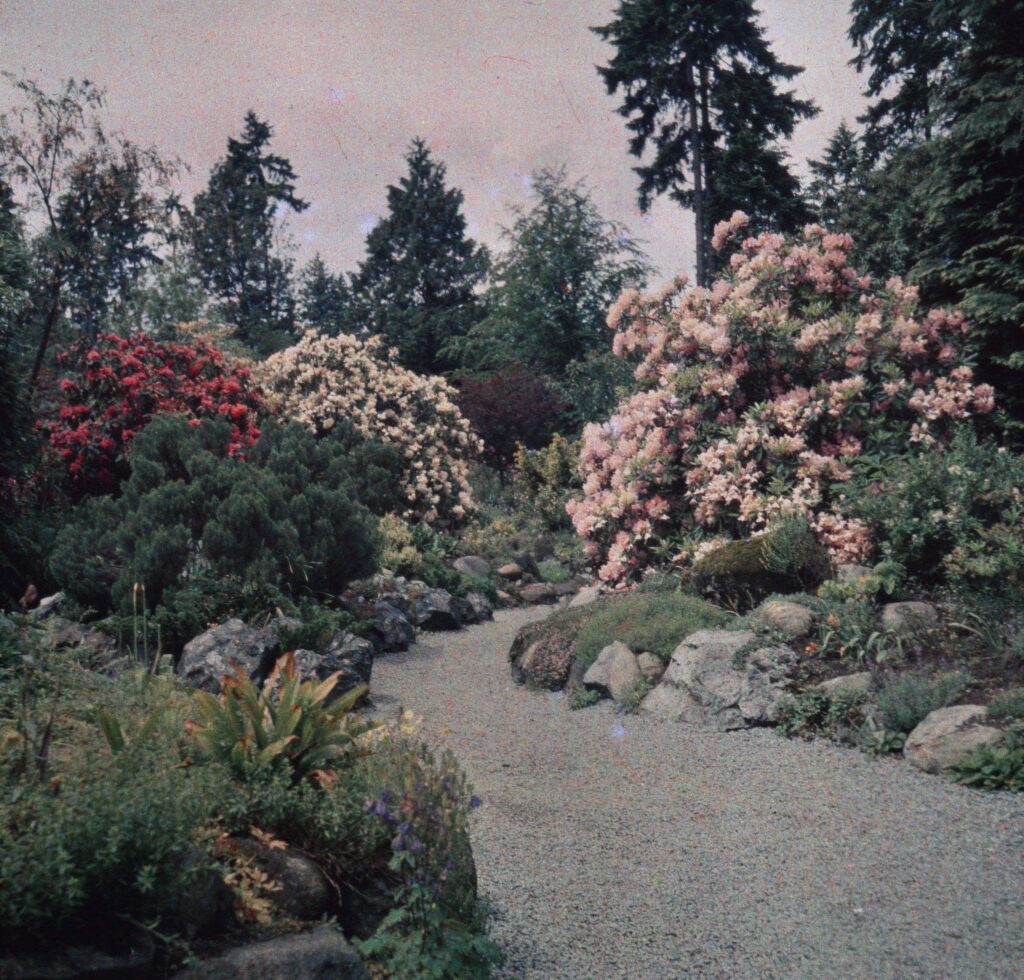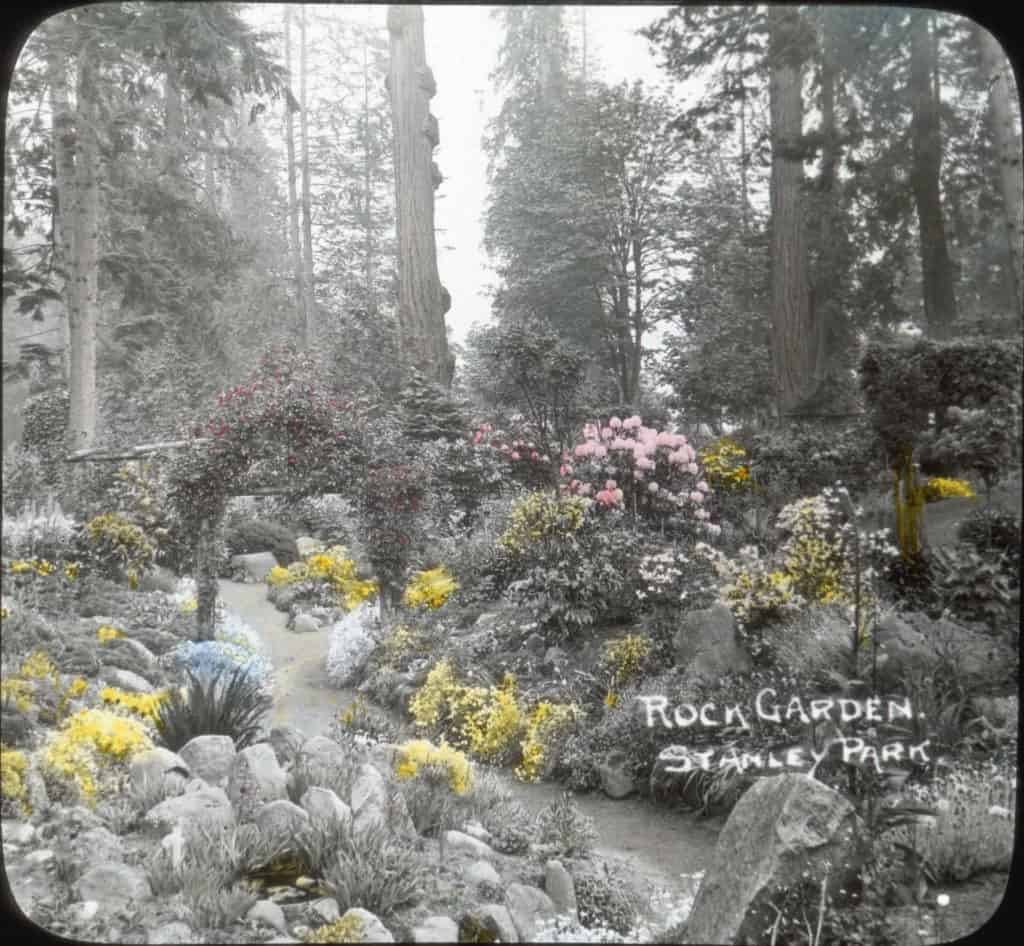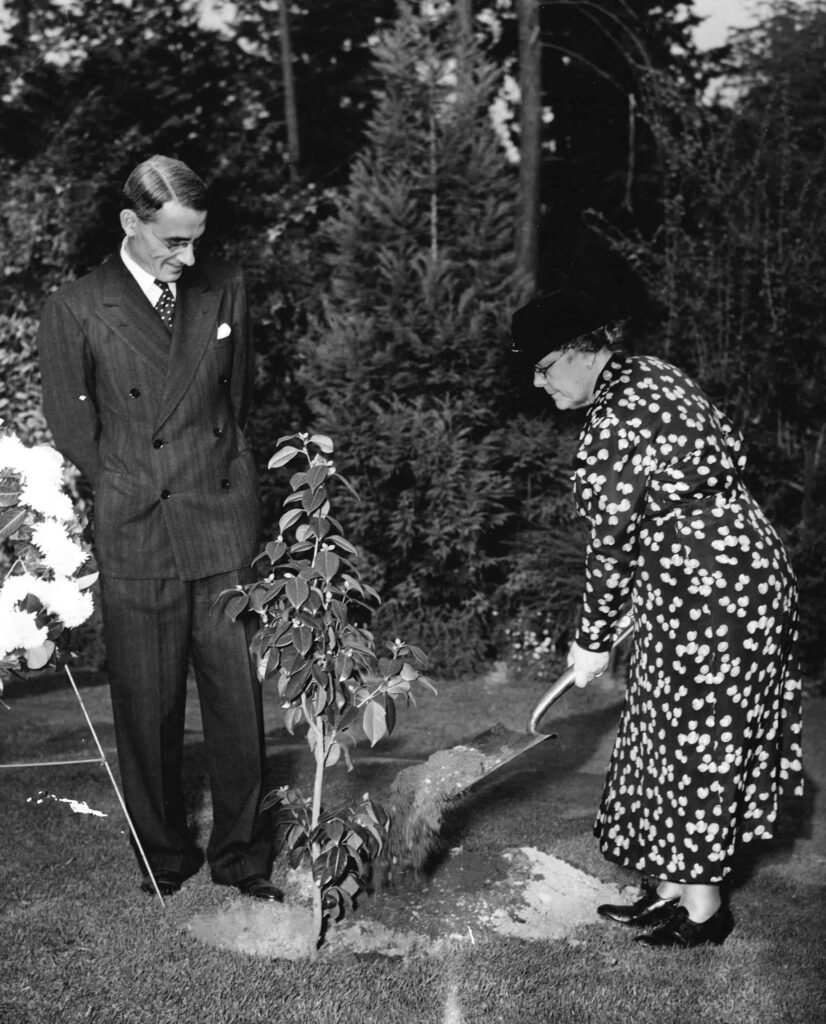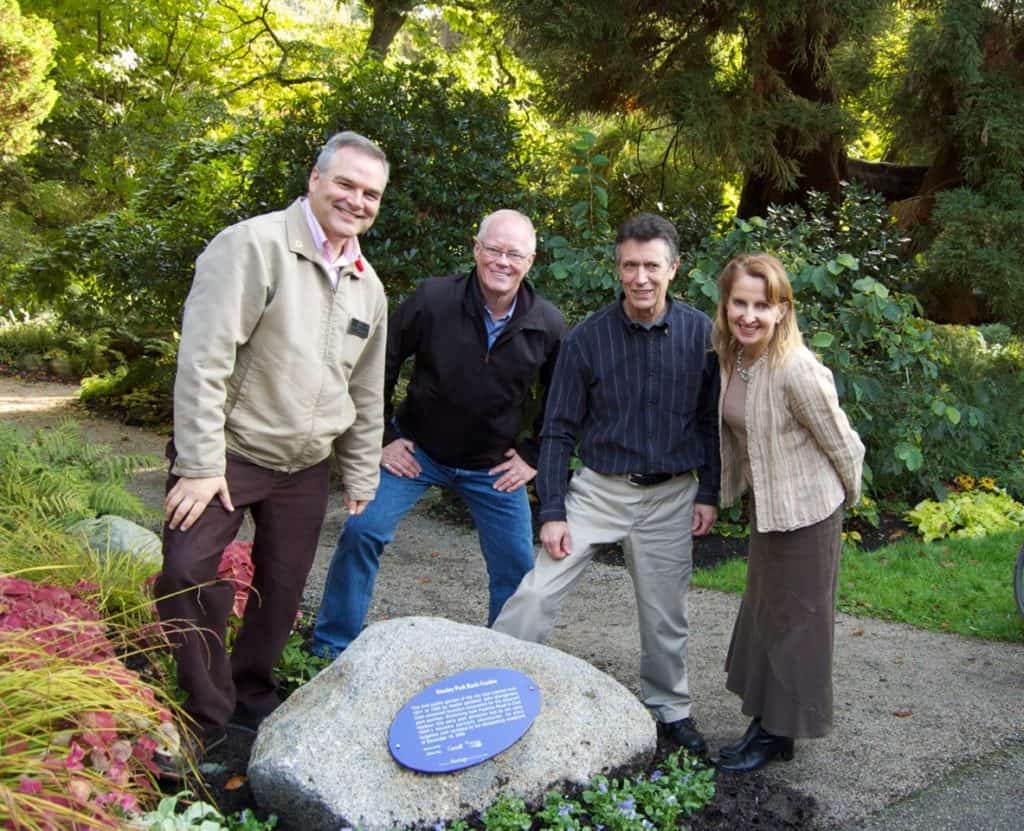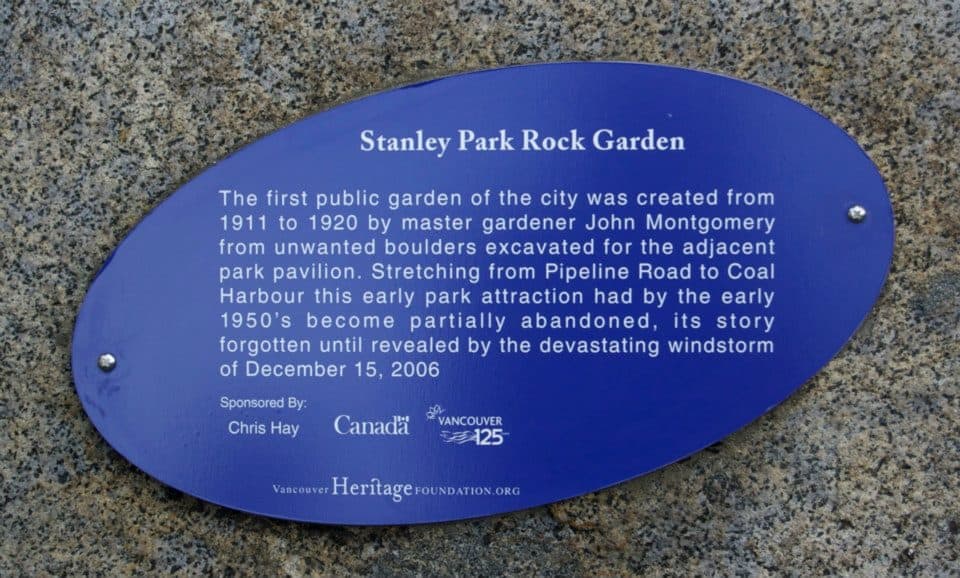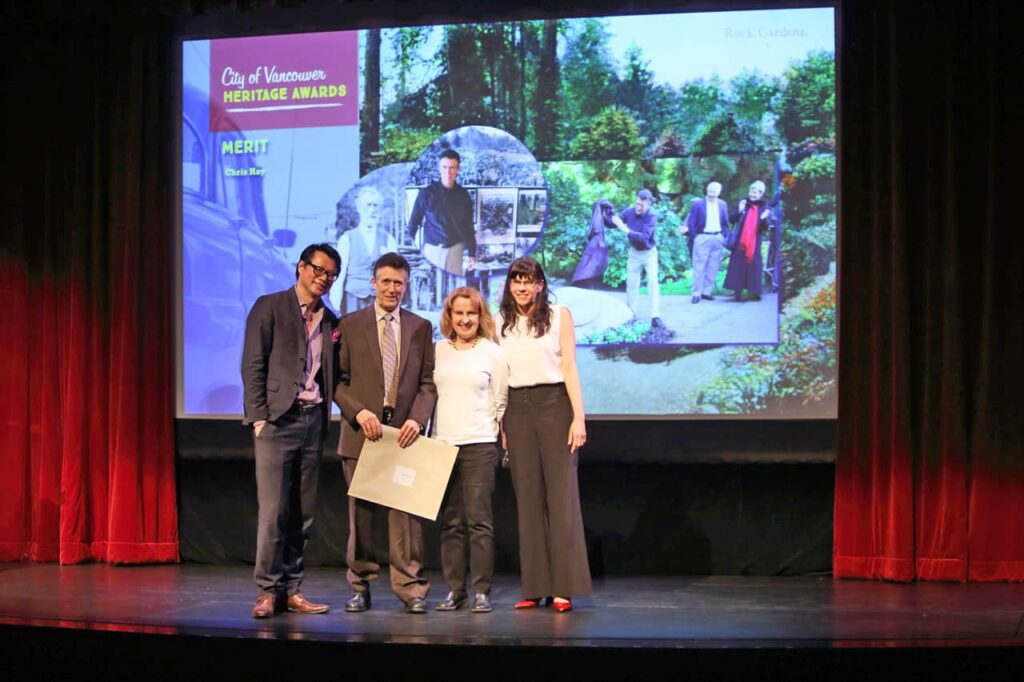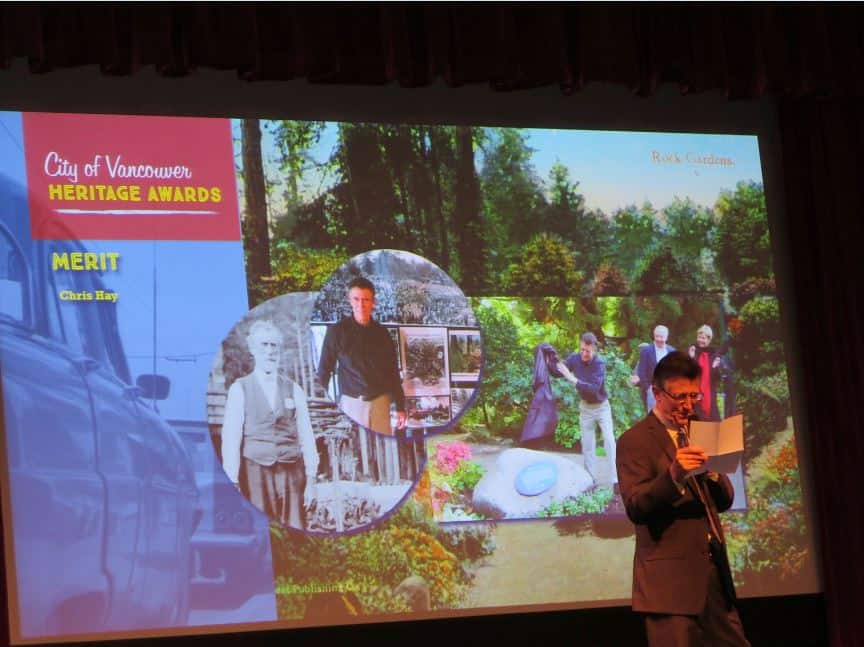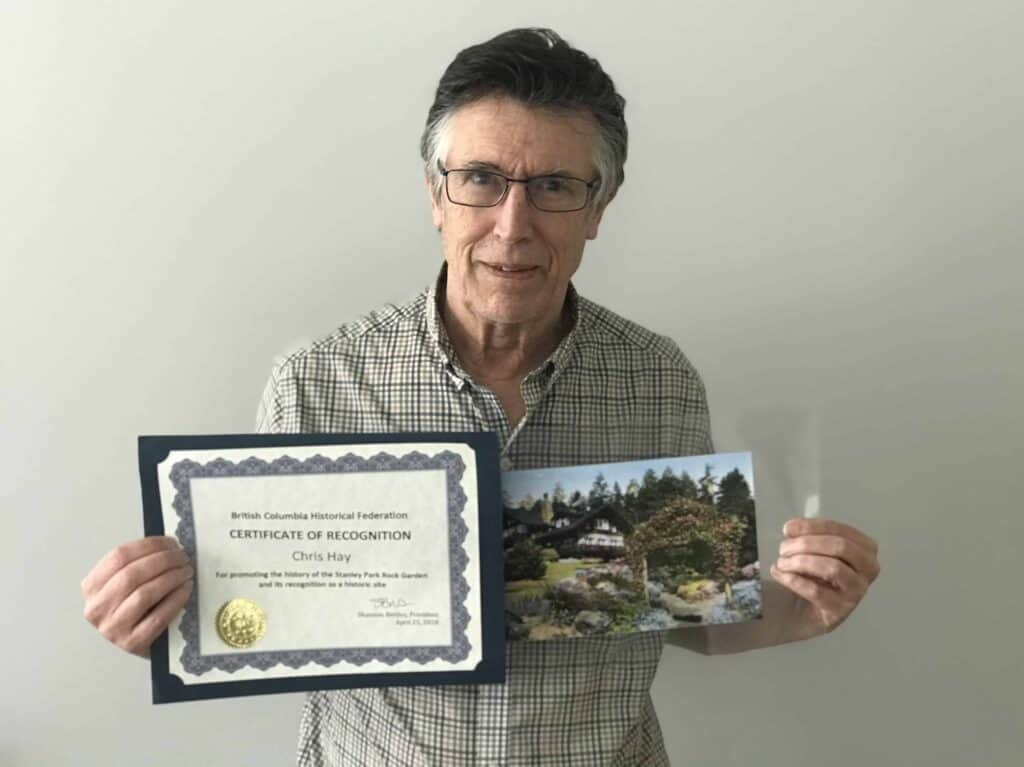John Montgomery: Park Gardener
John Montgomery was a master gardener when he immigrated to Canada from Scotland in 1908, at the age of 64. The following year, he applied for a position as gardener at Stanley Park and two years later, he began laying out the Stanley Park rock garden. He used boulders and rocks left over from the excavation and construction of the Stanley Park pavilion, working continuously on his creation until his death in 1920.
The First Public Garden in Vancouver
The rock garden would eventually span almost a mile in length as it wound its way from the Park’s entrance up to and beyond the Pavilion. With its rustic arbors, benches, rock lined pathways featuring “almost every kind of rock plant, flower, water lily and various flowering shrubs” the garden was one of the park’s top attractions. Tourist publications heralded the garden for its beauty and it was a popular postcard subject. Heralded as the first public pleasure garden in Stanley Park and possibly Vancouver, it was one of the only gardens in the city available to the public for “pleasure outings, picnics and forested walks”. It allowed Vancouverites to enjoy the beauty of a garden found previously only in the city’s wealthy private homes.
From the Sunday Province, 1927: “So cleverly, so carefully, has the rock garden been built, grounded with greenery of tender plants and fern-like wild ones. There, one will notice, things are planted in longish drifts, and not in clumps or patches, the length of the drift going with the natural stratification. Again, as the season advances, one will notice the further care in selecting the plants whose colours will harmonize with the corner of the rockery to which they have been assigned”.
Ceremonial Purposes
The rock garden’s importance is revealed through its historical use for ceremonial purposes like tree plantings and memorial plaques. The president of Rotary International planted a tree in the garden to commemorate his visit to Vancouver in 1932 and dignitaries including the American Consul General and the Mayor of Vancouver, gathered in 1939 for the planting of a tree honouring the centenary of the birth of the American suffragist Francis Willard and recognizing the winning of the vote for women in British Columbia.
Stanley Park Pavilion
The garden surrounds the rustic chateau-style Stanley Park Pavilion designed by Otto Moberg and completed in 1912. The rustic chateau-style pavilion measuring 133 feet by 53 feet was constructed with a stone exterior on the lower floors, half-sawn logs for the upper floor and is surrounded by a spacious open verandah. The landscape plan included an expanse of lawn, ornamental plantings, lily pond, pathways and a substantial bandstand – now demolished. The Pavilion was a popular spot and played host to numerous civic functions as well as welcoming the likes of Queen Elizabeth, President Harding, and Arnold Schwarzenegger.
A 1914 Vancouver Parks Board Annual Report cites: “The scheme for the improvement of the area surrounding the bandstand and pavilion, which was entered upon during 1913 was carried to completion this year. The whole area was treated in lawns, ornamental gardens and walks, the principal features of the scheme being the layout of a sunken rock garden, in which almost every kind of rock plant, flower, water lily and various shrubs are planted.”
A Forgotten Garden is Unearthed
For decades, the rock garden was one of Stanley Park’s top attractions, but after the Second World War, the park became neglected and gradually disappeared into the adjacent forest. Its rediscovery began when Chris Hay, great grandson of John Montgomery, started researching his family history. “The true extent of the Rock Garden was not revealed until a devastating windstorm hit Vancouver on December 15, 2006”, writes Hay. “All over Stanley Park, hundreds of trees came down, some miraculously allowing lost portions of this amazing landscape to be revealed again”. After years of research and lobbying, a motion was passed by the Park Board to formally recognize the Rock Garden as a historical site of the City of Vancouver. A good visual article from 2016 on this place, Vancouver’s First Public Garden, can be read here.
On October 23, 2011, we celebrated our very first Places That Matter plaque presentation with nominator and descendant of John Montgomery, Chris Hay and the Vancouver Board of Parks and Recreation. This was also the 100th birthday celebration for the Pavilion and its surrounding Rock Garden.
On May 14, 2020 the British Columbia Historical Federation announced Chris Hay as the recipient of a 2019 Certificate of Recognition for his invaluable efforts to have the Stanley Park Rock Garden recognized as a historic site in Vancouver, BC and nationally.
Sources
Nearby Places That Matter



